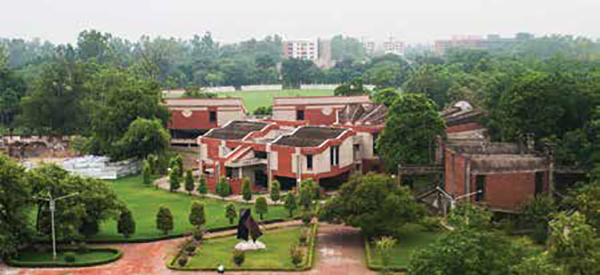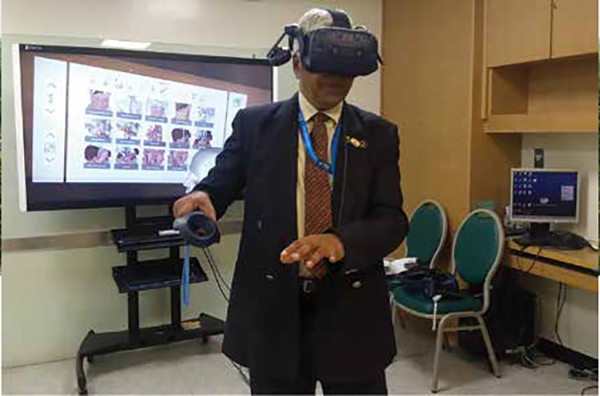
In 1998 while giving an Institute lecture at IIT Kanpur India, the author had bemoaned that science, engineering and technology institutions were far away from medical colleges, physically and emotionally. It is a sign of the times that autonomous medical colleges will now be part of IIT’s. The recent announcement from the globally renowned Indian Institute of Science, Bengaluru that an integrated 7 year MD Ph.D progammes will be started from 2025, to develop a cadre of fully trained medical scientists, augurs well for India. This overview discusses the relevance of such initiatives.

In 1998 while giving an Institute lecture at IIT Kanpur, India the author had bemoaned that science, engineering and technology institutions were far away from medical colleges, physically and emotionally. It is a sign of the times that autonomous medical colleges will now be part of IIT’s. The recent announcement from the globally renowned Indian Institute of Science, Bengaluru that an integrated 7 year MD Ph.D progammes will be started from 2025, to develop a cadre of fully trained medical scientists, augurs well for India. This overview discusses the relevance of such initiatives.
The concept of an MD–PhD program as an integrated approach to training clinician –scientists dates back to 1956. A long tradition exists of clinicians also becoming researchers. However well, integrated MD–PhD programs were established, as the standard medical college curriculum is insufficient to produce proficiency in the lab and the clinic. USA has the longest history of MD-PhD dualdegree training programs producing the largest number of MD-PhD’s in the world. Currently, around 90 MD Ph.D programmes exist in the US. of 1 million MD physicians in USA, only 14,000 considered research to be their primary focus. The 18,535 physicianscientists in 1983, had fallen to 14,479, a 22% decline by 1998. Heavy debt burden of most MD graduates, extended post-MD research training to 8–10 years, uncertainties for success even after pursuing rigorous research training accounted for this decline. On the other hand more than half of the individuals awarded Nobel Prizes in Physiology or Medicine (1997–2013) were MD–PhDs.
The professional worlds of the scientist and the clinician differ fundamentally. Clinical care is delivered with strong adherence to standards of practice and respect for individual expert opinion, despite realising possible uncertainties in diagnosis and management. Although the clinician desires to apply scientific knowledge, unequivocal relevant evidence often does not exist. In the real world, medicine, unlike the laboratory, is neither black nor white, it is various shades of grey ! Clinical care is delivered using scientific evidence, clinical experience, and patients’ individual desires and circumstances. Clinical practice values inquiry into what is unknown; however, confirmed diagnosis and management takes precedence. In contrast, the scientist embraces uncertainty as a means to discover what is true; variance and error are integral and informative to scientific practice. Clinicians are educated in the value of established standards of professional practice and protocols and need to adhere to them. In contrast, scientists are rewarded for investigating gaps in knowledge, challenging current hypotheses and questioning accepted truths.
Without the clinician in the scientist, there can be little translation of scientific discoveries to benefit patients. The gap (cultural and linguistic) between the research scientist in the laboratory and the harried clinician managing demanding patients with multiple complex health problems is getting wider. There are few scientists who truly understand clinical problems. Double blind, randomised, controlled, cross over, multi institutional studies are easier planned than executed. A clinical situation cannot be broken down to a mathematical quantifiable measurable number of constituent problems which can be replicated in a laboratory setting repeatedly. A clinician’s primary raison d^etre is to deliver what the patient wants – not necessarily treat the disease alone. Laboratory scientists generally have no idea of the complexities of insurance reimbursement. It is a sad fact but undeniable that choice of therapy is often determined by socio economic factors not by pure science. Although clinicians can work with scientists to great effect, the existence of both competencies in the same individual has conceptual advantages. However this unique individual is becoming an endangered species.
Training of clinician-scientists is long and complex requiring mastery of two challenging independent domains - rigorous medical specialty training coupled with equally rigorous laboratory and research training. Scientific training requires dedicated time away from the clinic. This results in longer clinical training times. It is intellectually and emotionally demanding to be trained as a scientist and a clinician simultaneously. It takes 10 years or more to complete residency and become a specialist in a procedural discipline. These individuals need to be convinced that less sleep, relentless amounts of work, longer time to become a specialist, sacrifices in personal lives and perhaps a rather unsupportive environment are still worth it. Clinician-scientists are vital members of the medical research enterprise, as the scientific questions they ask, result from taking care of sick people. They are in an ideal position to communicate and collaborate with PhD scientists and with health-care providers. The clinician–scientist role is critical to the future of health care. Clinicians generally focus primarily on clinical practice. The clinician–scientist also considers scientific research. This, bridges the gap between discovery and clinical care.
Post MD-PhD, there would be multiple career paths. Healthcare sciences is growing exponentially the emphasis shifting from the current “individual diagnosis and treatment” to “promoting population wellness the e Way”. There is often an overkill in deploying technological aids even for primary health care. With insurance companies having a say in reimbursing procedures, even the clinician of tomorrow should have better training in science and research methodology to be able to dispassionately evaluate and understand evidence based medicine.

Medical Research and Technological Innovation under the same roof is available at IIT Kanpur. Government, healthcare organisations and academia have the single goal to bridge the gap between science, engineering, technology and healthcare The institute has developed knowledge centres during the last few years. The Mehta Family Centre for Engineering in Medicine at IITK is a centre of higher education with its prime focus on research in Regenerative Medicine, Molecular Medicine and Engineering and Digital Medicine. The Indian Council of Medical Research (ICMR) is ensuring the setting up of a Centre of Excellence for Medical Devices. A rapid prototyping facility and a medical device testing facility with funding support by BIRAC and National Biopharma Mission (NBM) has also been set up. This is in addition to the Centre for Nanosciences, National Centre for Flexible Electronics (NFlexE), DBT School for Healthcare Innovations and Entrepreneurship and Startup Incubation and Innovation centre (SIIC). IITK has a large pool of academic resources spanning across 18 departments, 25 centres, and 5 Interdisciplinary programmes in all engineering, science, design, humanities, and management disciplines.
The recently started Gangwal School of Medical Science and Technology aims to build academic and research leadership with local, national and global impact. Training next-generation healthcare professionals for India, who will develop cost effective, need based, future ready, appropriate solutions for healthcare needs is the need of the hour. Several ‘Centres of Excellence (CoEs) are being planned. This will include a superspeciality hospital for hands on clinical exposure to health care scientists and technologists. The CoE for Telemedicine and Healthcare Robotics will bridge the urban rural health divide using technology. A CoE for AI in Healthcare focusing on diagnosis and disease prevention has been established, planning for a smarter and connected healthcare ecosystem.
The School of Medical Science and Technology @ IIT Kharagpur was established as early as 2001. SMST provides a platform of interdisciplinary teaching and research in medical science and technology, resulting in a better integrated healthcare delivery system. India needs clinicians with a knowledge of, and trained in technology. A medical academic institute with a multispecialty research centre at its core, promoting education and collaboration in biomedical research, leading to better treatment and healthcare delivery to patients is necessary. The School introduced an interdisciplinary 3 years Masters Program in Medical Science and Technology (MMST) for MBBS doctors. The MMST program was the first comprehensive physiciantechnologist training program in India aiming to bridge the gap that has historically separated biological sciences from engineering and physical sciences. A 4 semester M.Tech program in Medical Imaging and Informatics is offered to engineers. Areas identified for teaching and R&D activities include Medical Imaging and Image Analysis, Medical Instrumentation, Tissue Engineering, Biomaterials, Bio-MEMS, Reproductive Biology, Cancer Drug Design, Medical Statistics and Informatics, Nuclear Medicine, Radiation Therapy ,Health Care Management, Herbal medicine and Bio-Engineering

IISc will set up a postgraduate medical school on its campus in Bengaluru to develop physician scientists. The new 800 bed multi speciality Bagchi- Parthasarathy hospital will provide the training area for these dedicated medical scientists. This new entity will provide an integrated MD-PhD programme. The clinician-scientists, of the future will be trained in the hospital and science and engineering labs of IISc. The hospital will have state-of-the-art facilities for diagnostics, treatment and research. There will be a number of specialities and super specialities. Advanced digital technologies and solutions, such as integrated EMR systems and a comprehensive telemedicine suite with haptics interfaces will be available. Those selected for training as clinician scientists will identify their areas of research that combines biotechnology, nanotechnology, or data science and AI with medical diagnosis and research. Another dual degree in the offing is the MD-MTech programme to develop indigenous med-tech products. This will be a confluence of basic science, engineering, technology and clinical sciences The med-tech incubation system will support this initiate.
Govt. of India through it’s e-Sanjeevani telehealth platform has initiated delivery of remote healthcare. It is just a question of time before state-of-the-art, pointof-care diagnostics (IOMT enabled POC devices) assessing 100 different physiological parameters ensure better last mile healthcare delivery. Achieving this implies accumulation of colossal patient data. Deployment of block chain technology can ensure health data privacy. This data vault could be a rich repository of health data for AI powered disease prediction leading to precision medicine. To make all this happen from conceptualisation to implementation, maintenance, self sustenance and ultimately to ensure better health care outcome for the individual suburban / rural patient, requires clinicianscientists – technologists who can see the “Big Picture” . Those driving these initiatives need to have been exposed to clinical sciences, technology, innovation, scientific research and business management during their formative years and training.
Epilogue The author completed a 5 year post graduateM.Ch course in neurosurgery after a 6.5 years MBBS course. Following this he took another 5 years to get a Ph.D in neurosurgery while working as an Asst Professor and having private practice. This was in the nineteen eighties, when the world was totally different. Considerable family support and determination alone made this possible in a government medical college bound by rules and regulations without precedents! Alas there was no combined M.ChPh.D programme then!!